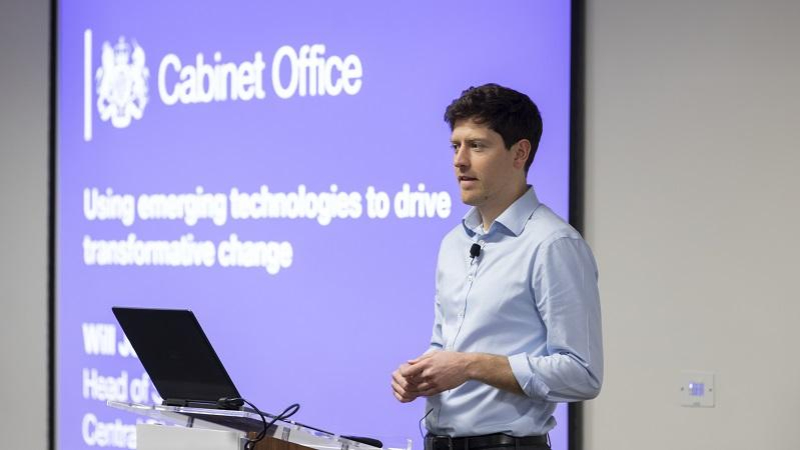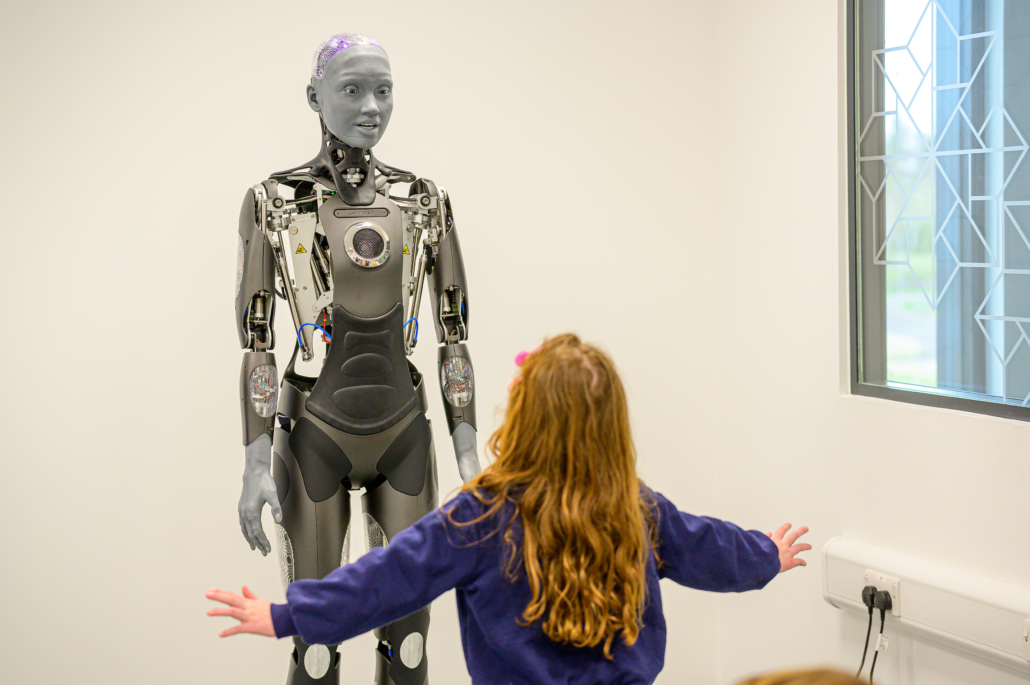CDDO head of strategy points to challenges and opportunities created by next-generation technologies. Photo: Will Joss speaking on stage at PublicTechnology Live. Credit: Tom Hampson/Visual Eye Creative
Artificial intelligence, blockchain, and quantum computing are among the emerging technologies with the biggest potential to support government in delivering better services and making efficiency gains, according to leadership at the Central Digital and Data Office.
Speaking at PublicTechnology Live in London this week, CDDO head of strategy Will Joss told attendees that, while there are numerous examples of departments undertaking innovative work with new technologies, more needs to be done to coalesce and expand these activities across government.
“The main challenges ahead are moving from pockets of progress to enduring transformation. We see lots and lots of great examples across government where teams are using new technology,” he said. “Now, we need to move from those pockets to a situation where we have an enduring transformation that scales consistently to meet the needs of our users.”
AI currently has the most applications of the three primary emerging technologies on the government’s radar – partly because departments have been exploring its use the longest.
The Met Office has been working over several years with the Alan Turing Institute on an advanced, powerful data science capability they used for weather prediction and modelling, which “is one of the most powerful in the world”, Joss said.
“The modelling is helping us to understand everything from the weather today to what the climate might look like over the next century.”
Another example of AI in public sector applications is provided by the Government Digital Service. Joss said the Cabinet Office unit has used machine learning to help improve the content on GOV.UK.
“A machine learning model looks across hundreds of thousands of pages of content and is able to tag content with high accuracy. For people to embark on such a task wouldn’t have been worthwhile,” he said.
Blockchain – a form of distributed ledger technology – is most widely recognised for its use in supporting cryptocurrency systems. Joss said that there are both challenges and opportunities to bear in mind.
“Bitcoin not only poses a massive challenge for government in the way that we seek to regulate and keep up with the pace of change, but it does also seem to offer some opportunities for the public sector if we can harness that technology effectively to decentralise and decrypt our data and increase efficiency”
Will Joss, CDDO
He told attendees: “Blockchain technology, like bitcoin, not only poses a massive challenge for government in the way that we seek to regulate and keep up with the pace of change, but it does also seem to offer some opportunities for the public sector if we can harness that technology effectively to decentralise and decrypt our data and increase efficiency.”
HMRC has piloted using blockchain in its work managing imported goods, according to Joss. Data is automatically and securely captured at each stage as a product moves through the supply chain.
“You can see the benefits in efficiency: it just makes that process run more quickly,” he said.
Distributed ledger systems are also being used at HM Land Registry to enable digital transfers of property.
“With this blockchain technology, a transaction can get automatically added to the land register,” Joss explained, noting that, in future, this technology could span the whole lifecycle of property assets.
Joss recognised that quantum computing is only at the early stages of explorations of its possible use in government.
“The modelling is helping us to understand everything from the weather today to what the climate might look like over the next century.”
Another example of AI in public sector applications is provided by the Government Digital Service. Joss said the Cabinet Office unit has used machine learning to help improve the content on GOV.UK.
“A machine learning model looks across hundreds of thousands of pages of content and is able to tag content with high accuracy. For people to embark on such a task wouldn’t have been worthwhile,” he said.
Blockchain – a form of distributed ledger technology – is most widely recognised for its use in supporting cryptocurrency systems. Joss said that there are both challenges and opportunities to bear in mind.
He told attendees: “Blockchain technology, like bitcoin, not only poses a massive challenge for government in the way that we seek to regulate and keep up with the pace of change, but it does also seem to offer some opportunities for the public sector if we can harness that technology effectively to decentralise and decrypt our data and increase efficiency.”
HMRC has piloted using blockchain in its work managing imported goods, according to Joss. Data is automatically and securely captured at each stage as a product moves through the supply chain.
“You can see the benefits in efficiency: it just makes that process run more quickly,” he said.
Distributed ledger systems are also being used at HM Land Registry to enable digital transfers of property.
“With this blockchain technology, a transaction can get automatically added to the land register,” Joss explained, noting that, in future, this technology could span the whole lifecycle of property assets.
Joss recognised that quantum computing is only at the early stages of explorations of its possible use in government.




